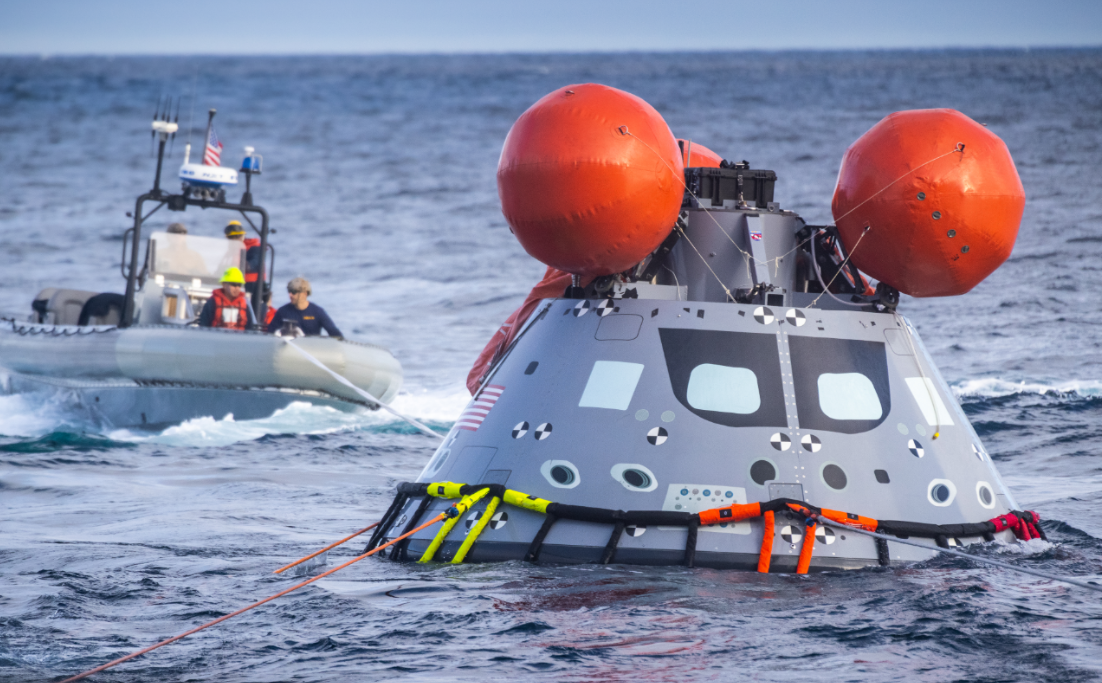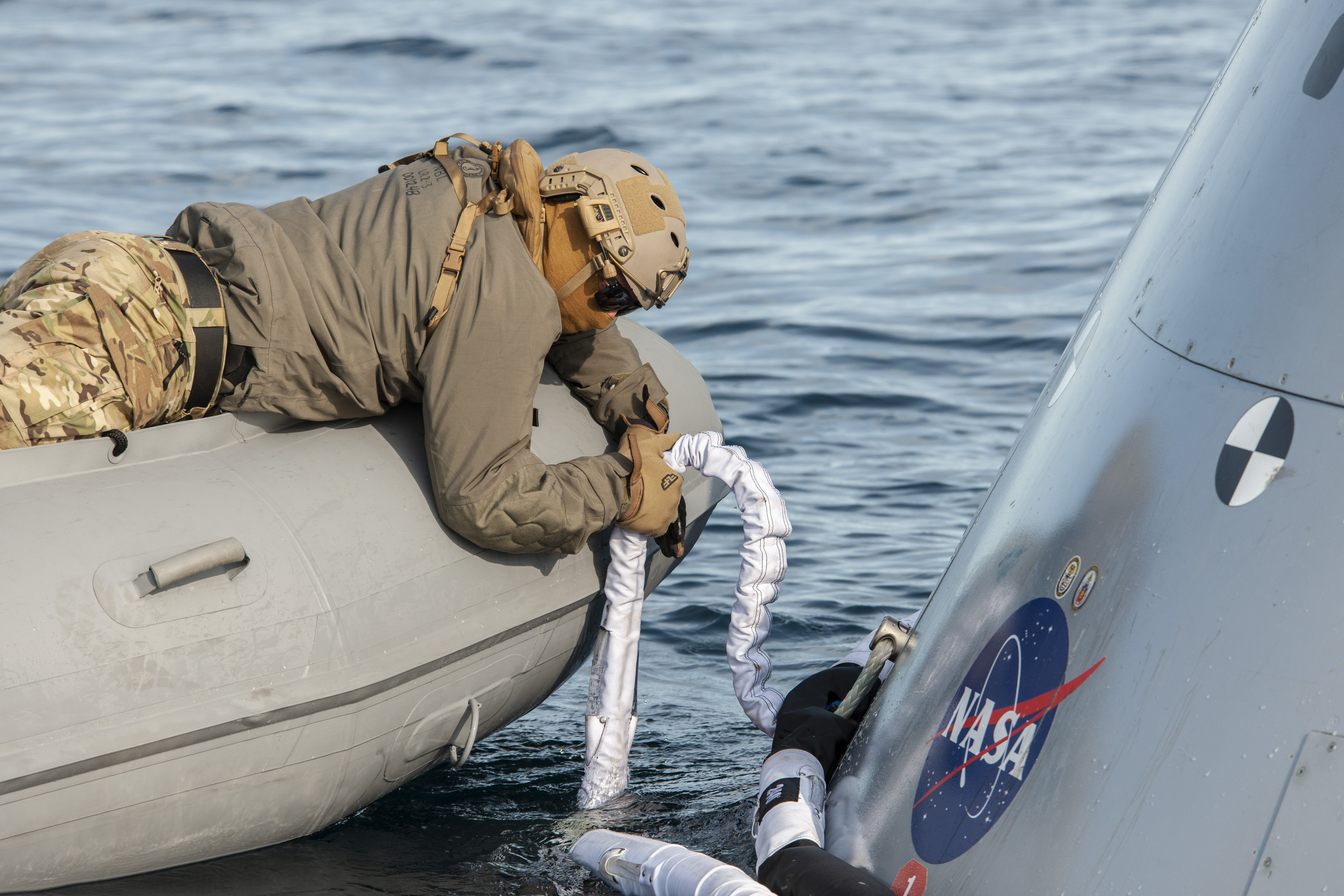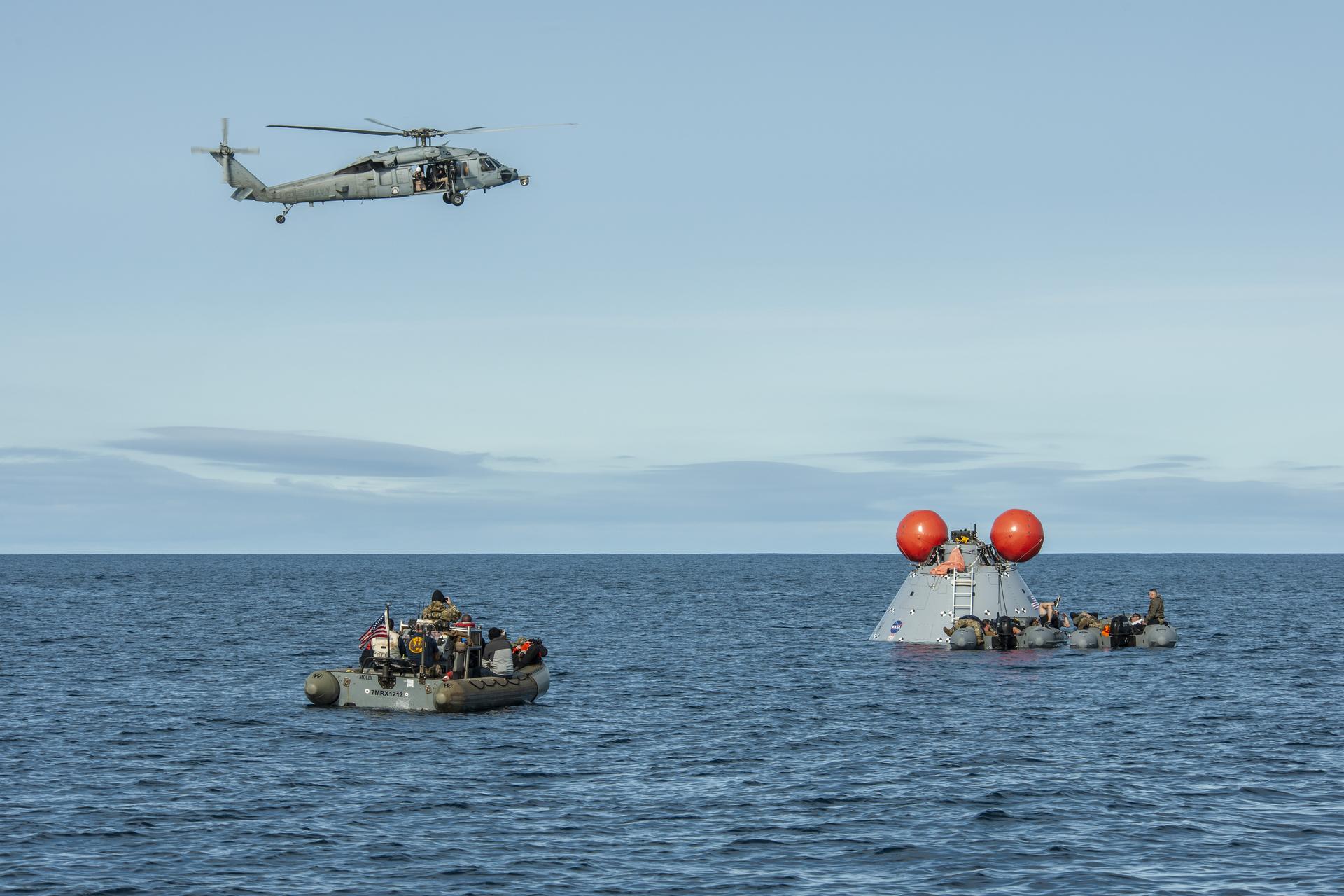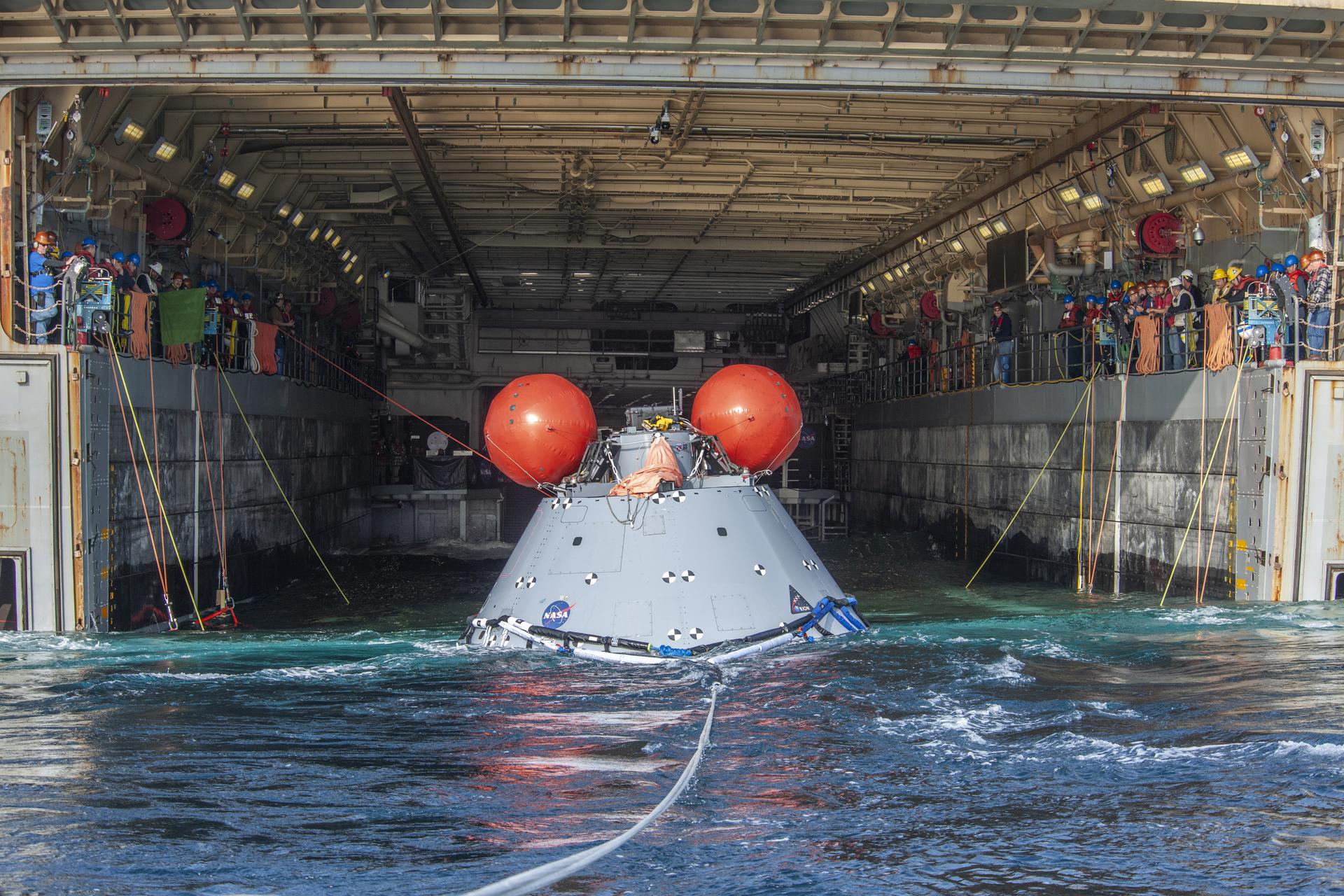Here's how the US Navy will fish NASA's Artemis 1 Orion spacecraft out of the sea after splashdown
The U.S. Navy and NASA have been preparing for Orion's recovery for years.
The Artemis 1 mission will soon come to a close, and when it does, the U.S. Navy will be ready to recover the Orion spacecraft from the Pacific Ocean.
The Navy has been training in conjunction with NASA on the recovery operation, which will involve hoisting the Orion capsule from the ocean and towing it aboard the Navy's amphibious transport dock ship USS Portland with a winch. The USS Portland will then bring Orion into port at Naval Base San Diego.
To prepare for the recovery operation, the U.S. Navy, the Landing and Recovery Team led by NASA's Exploration Ground Systems program at Kennedy Space Center (KSC) and other Department of Defense (DoD) personnel have been training for years, beginning in 2014. This training takes on an added sense of urgency now, due to the fact that Orion is hurtling through space at over 1,110 mph (1,786 km/h) on a course straight for Earth.
Related: Watch the moon eclipse Earth in stunning video from Artemis 1's Orion spacecraft

Orion will be traveling at 25,000 mph (40,000 km/h) when it enters Earth's atmosphere on Sunday (Dec. 11). After deploying a series of parachutes, the capsule's descent will slow to just 25 mph (11 km/h) before it makes "a precise landing within eyesight of the recovery ship," according to NASA.
The Artemis 1 team had originally aimed to splash down not far from San Diego, but predicted inclement weather has pushed the target zone about 300 miles (480 kilometers) south, off the coast of Baja California.
In addition to the crew of the USS Portland and its aircraft, the NASA-led Landing and Recovery Team will consist of U.S. Navy divers, U.S. Air Force weather specialists and engineers and technicians from Lockheed Martin Space Operations. (Lockheed Martin manufactures the Orion capsule for NASA.)
Get the Space.com Newsletter
Breaking space news, the latest updates on rocket launches, skywatching events and more!

Images shared by KSC show the extent of the recovery operation, which will involve the USS Portland, Sikorsky SH-60 Seahawk helicopters, and a variety of smaller inflatable vessels that will carry U.S. Navy divers to Orion to attach winch cables.

The images were taken during the team's Underway Recovery Test 9, which took place in November 2021. Melissa Jones, NASA recovery director at KSC, said the recovery operations training isn't aimed solely at being prepared for Artemis 1, but to be ready to recover future Orion capsules returning from the moon with astronauts aboard.

"For the past several years, NASA and DoD have been working together to develop the procedures and hardware necessary to safely recover Orion, not only after this uncrewed flight, but also for future crewed missions onboard the spacecraft," Jones said at the time.
"This was our mission dry run and certifies our entire team to execute the recovery mission," Jones said. "This has been a tremendous effort by all, and our team is incredibly excited that the next time we are together, it will be for the real mission recovery."
NASA and the Navy already have one Orion recovery under their belts. That one was performed at the end of Exploration Flight Test 1, which sent an uncrewed Orion to Earth orbit for a few hours in December 2014.
Follow Brett on Twitter at @bretttingley. Follow us on Twitter @Spacedotcom or on Facebook.
Join our Space Forums to keep talking space on the latest missions, night sky and more! And if you have a news tip, correction or comment, let us know at: community@space.com.

Brett is curious about emerging aerospace technologies, alternative launch concepts, military space developments and uncrewed aircraft systems. Brett's work has appeared on Scientific American, The War Zone, Popular Science, the History Channel, Science Discovery and more. Brett has English degrees from Clemson University and the University of North Carolina at Charlotte. In his free time, Brett enjoys skywatching throughout the dark skies of the Appalachian mountains.









